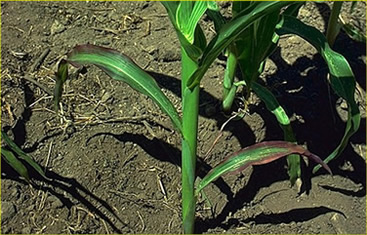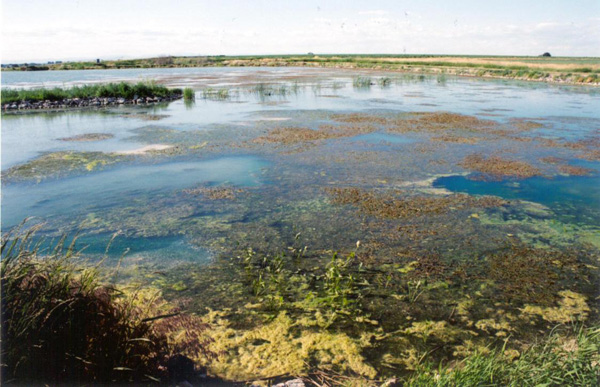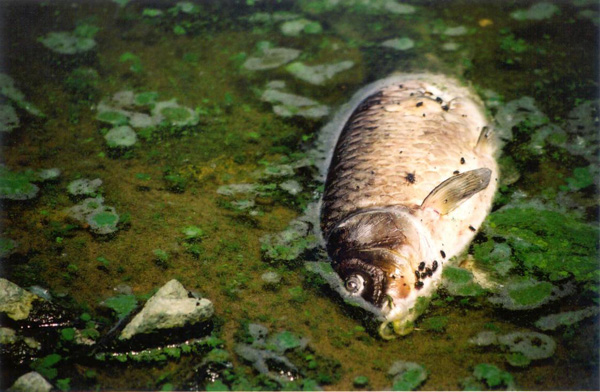Phosphorus is a key component of cellular compounds including ATP, DNA and RNA; bones and teeth contain large amounts of P; and phosphorus is essential for photosynthesis, N fixation, plant root development, flowing, fruiting, and seed production. Bottom line: no P = no life. But, as with many key components, we can have too much or too little of a good thing.
As you go through this unit, fill out the module worksheet: P Management Worksheet.
To read more on this subject: Phosphorus Guidelines for Field Crops in New York (section 1)

Purplish leaves are a common sign of P deficiency, although some corn hybrids will exhibit purple stalks and/or leaves without being deficient in P. The best way to know is to soil test the field. Phosphorus deficiency can also be indicated by poor growth and yield, premature fruit drop, delayed maturity, and/or poor root growth.
High soil test P levels can lead to zinc deficiencies in plants. However, on livestock farms the high soil test P levels are often due to a history of manure application and manure also delivers zinc to the soil and crops.
 The
more important issue with excess phosphorus is its impact on water quality.
Algae growth in many fresh water systems (e.g. lakes, streams, reservoirs,
etc.) is often limited by the supply of phosphorus. When P is added to a
watercourse through runoff and erosion from the landscape, algae "blooms",
as shown in the photos.
The
more important issue with excess phosphorus is its impact on water quality.
Algae growth in many fresh water systems (e.g. lakes, streams, reservoirs,
etc.) is often limited by the supply of phosphorus. When P is added to a
watercourse through runoff and erosion from the landscape, algae "blooms",
as shown in the photos.


In addition to reducing the aesthetic quality of the watercourse, as the algae dies, the microorganisms that decompose the algae consume oxygen that would otherwise be used by fish. This can lead to declines in fish populations.
The treatment of drinking water from surface water reservoirs can also be complicated by algae blooms.
Phosphorus can be lost to watercourses from many activities on the landscape. Urban runoff, municipal sewage treatment, forests, agriculture, etc. all contribute phosphorus. Because this module is focused on P management in agriculture, continue to the next page for a dairy farm example.